Carnivorous Plants:
|
Classification
Phylogeny World Map Illustrations References |
| CP Book Library |
| CP Web Links |
2008-May-02 Apalachicola National Forest, Florida Back to 2008 Florida Trip
Venus Flytrap (Dionaea muscipula)
Spring is the time of flowers for Venus flytraps. A tall flower stem develops at the rosette center, often reaching 30 cm in height by the time of blossom in May-June. A white flower has five petals, shot with greenish veins. This unusually tall flower stem is supposed to provide spatial separation of flowers and traps, thus reducing the risk of pollinators being captured.
It is noted that, in nature as well as in cultivation, the plants tend to suspend trap production during flowering. This is likely due to the energy being diverted to the flower production, rather than to provide safety for pollinators. Indeed, the spring traps remain active at the time of flowering.
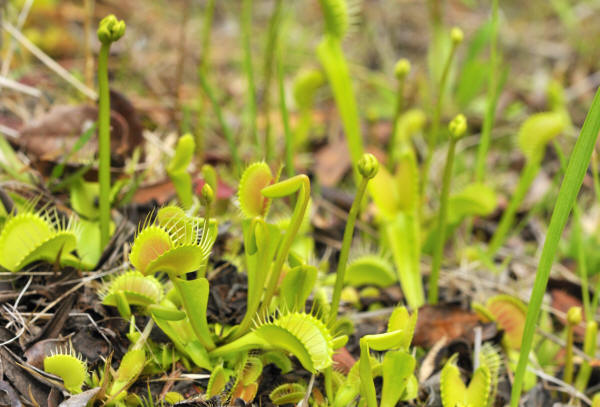
The month of May is also the time Venus flytraps start to produce trap leaves which are more erect with the narrower leaf blade. Trap leaves in the early spring are more flat on the ground having the wider blade, possibly to compensate for photosysthesis in low light intensity. The erect leaf posture in summer provides a better trap strategy aimed at presumably abundant winged insect population.
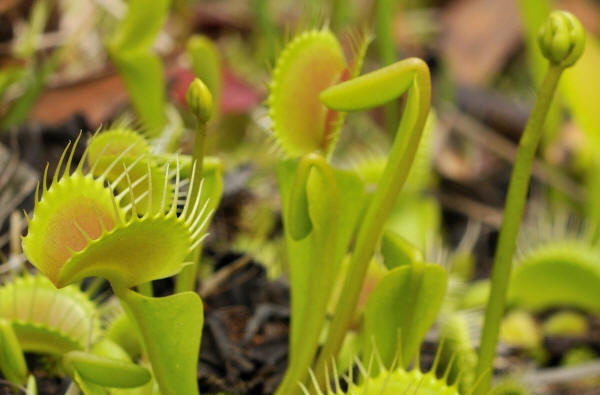
I do not know if, in native North Carolina, the pollination is supposed to be over before the erect, taller traps get ready: The erect leaves serve to compromise (albeit only slightly) the spatial separation achieved by tall flower stalks at a fair cost of biomass diversion. I wonder if the warmer Florida climate has slightly tinkered the delicate timing of flowers and erect leaves. Since the last time I visited NC is 29 years ago, I do not remember how it was over there. Looking at the NC pictures I had taken in May 1979, I do not see any erect leaves amid emerging flower stems.
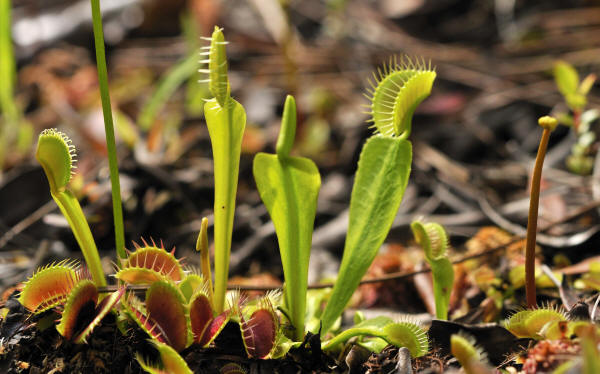
Drosera capillaris, FL
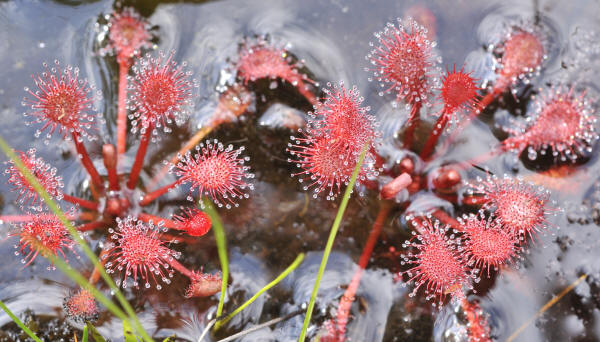
Erect summer traps are all but ready by the time of flowering in this Florida habitat.
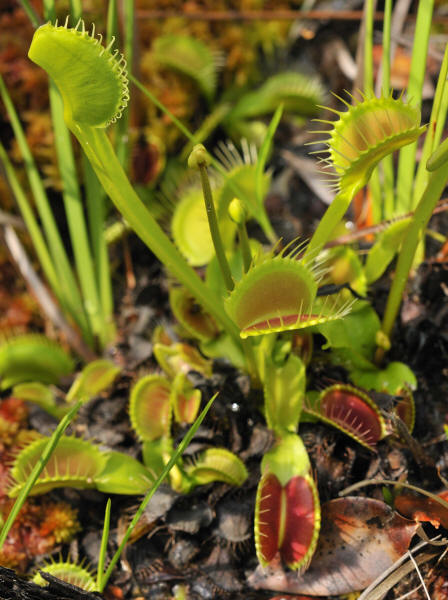
The trap color is genetically fixed, to some extent. That does not imply it is not affected by environmental factors. The cold early spring weather seems to have deepened the trap color. Or, is it because the plant received more sun light during the spring until surrounding vegetation started to grow toward summer?
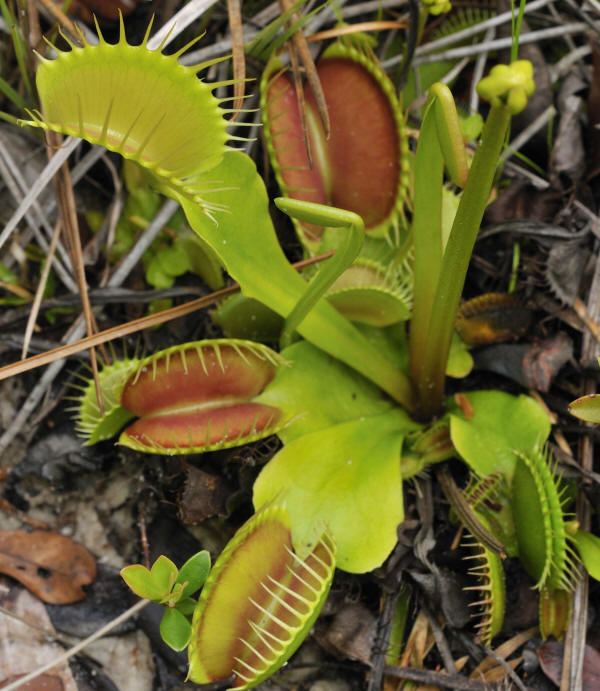
Note the veining of a trap blade.
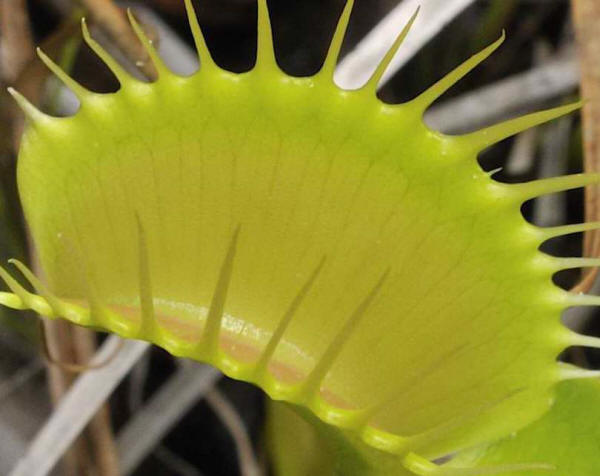
| Carnivorous Plants Photography Web Site: Copyright © 2001-2018 Makoto Honda. All Rights Reserved. |